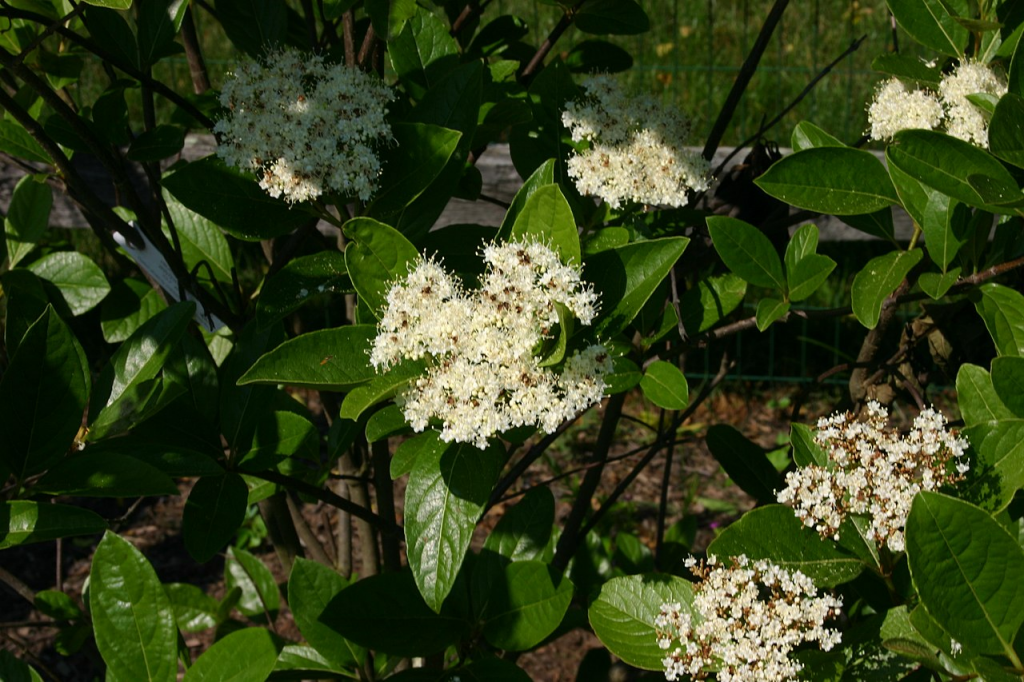
Also known as withe-rod, possumhaw, and wild raisin, this deciduous shrub is native to eastern North America where it lives in swamps, bogs, and low woods. It is a member of the moschatel fmaily, Adoxaceae, that also includes elders. The shrub grows up to 12′ tall and wide, and has a dense rounded form and spreading arching branches. The leaves are elliptical to oblong, up to 4″ long, and are glossy dark green during the growing season sometimes turning reddish purple in the fall. In late spring to early summer, creamy white flowers appear in flat-topped clusters 2-5″ across. The flowers are fragrant and attract butterflies and other pollinators. Clusters of edible berries follow and change color as they ripen from light pink to deep pink to blue to purplish-black with all colors appearing at the same time. The berries are acidic but provide food for birds and small mammals. Smooth witherod is a good choice for shrub borders, foundation plantings, hedges and screens, as well as for use in water, bird, butterfly, pollinator, wildlife, and native plant gardens. The genus name, Viburnum, is the ancient Latin name for one species of the genus. The specific epithet, nudum, is the Latin word for naked or nude. Photo Credit SB Johnny ,Wikimedia Commons

Type: Flowering deciduous shrub
Outstanding Feature: Flowers, berries, tolerance of wet soil
Form: Rounded
Growth Rate: Moderate
Bloom: Flat-topped clusters of creamy white fragrant flowers in late spring to early summer
Size: 5-12′ H x 5-12′ W
Light: Full sun to partial shade
Soil: Average, moist to occasionally wet, well-drained, acidic; tolerates less
Hardiness: Zones 5-9
Care: Prune lightly in fall if needed; for best fruit display plant in groups to facilitate cross-pollination;
Pests and Diseases: None of significance
Propagation: Seed, semi-hardwood cuttings in summer
Outstanding Selections:
‘Angustifolium’
‘Brandy wine’
‘Winterthur’ (compact, 6′ tall)
Photo Credit: David J Stang, Wikimedia Commons